

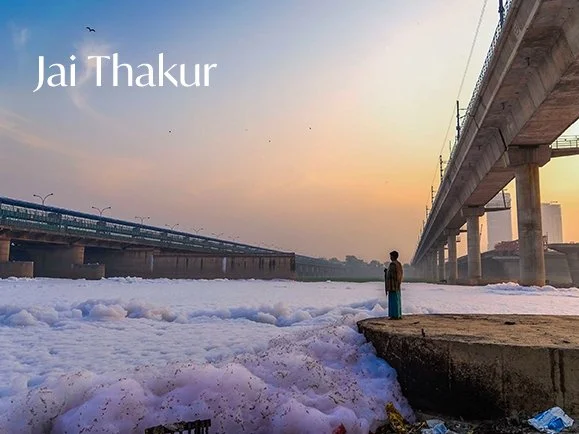
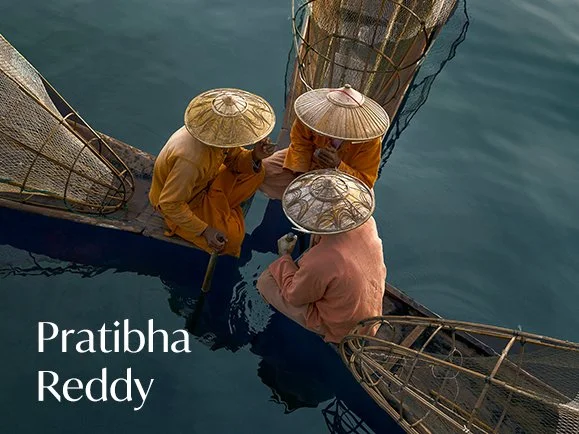
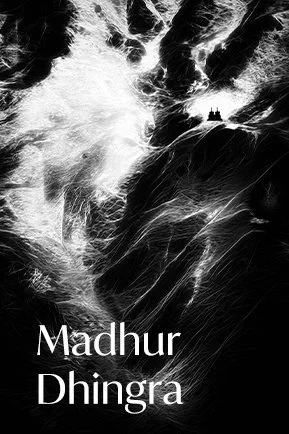
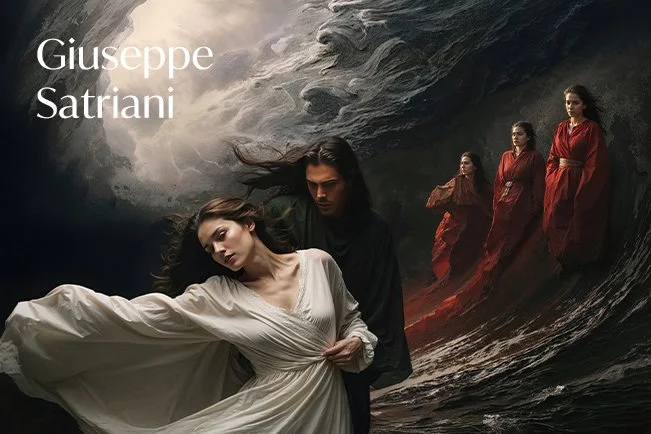
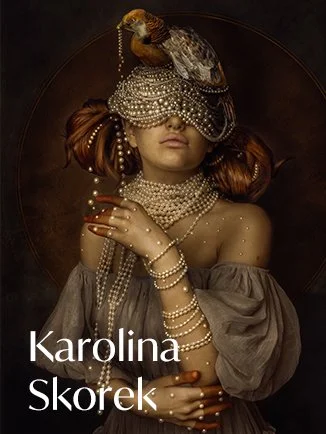
As summer unfolds and the world bathes in long light and slow days, we’re delighted to bring you a new issue filled with stories that invite reflection, imagination, and depth. Whether you’re travelling, resting, or creating, we hope these pages offer inspiration and space to pause.
In this issue, we journey across diverse emotional and visual landscapes—starting with the FotoNostrum Choice Awards section, where we present this time the winning and honourably mentioned photos of the Black&White category. Jai Thakur reveals in his work along the Yamuna River a powerful intersection of environmental crisis and human faith: “Documenting decay is also a way to document hope,” he reminds us.
Giuseppe Satriani navigates dual realms of photography and artificial intelligence, transforming memory and imagination into layered visual realities. In contrast, Karolina Skorek invites us into rich, theatrical dreamscapes drawn from the Baroque, surrealism, and her Polish roots—each image a myth told through modern tools.
We also step into the quietly monumental with Pratibha Reddy, whose travel and nature images speak of loss, wonder, and humility in the face of nature’s immensity. Shawna Gibbs brings joy and play to the everyday with her collaborative work with her children—reminding us how imagination reshapes the familiar.
Finally, Madhur Dhingra gives us a glimpse into a deeply personal and surreal visual language born from memory, intuition, and transformation. His painterly portraits drift between the real and the abstract, carrying emotional resonance in every blurred line.
Thank you, as always, for reading. We wish you a beautiful, restful summer—wherever you are, and however you spend it.
Warmly,
The Editorial Team
July 31, 2025
FotoNostrum Choice Awards Black&White
Eddy Verloes
Category Winner
Zen at Sea. © Eddy Verloes
Yvan Bedard
Honourable Mention
(Canada)
Yvan Bédard was born in a picturesque village surrounded by mountains, rivers, forests, and fields near Quebec City, Canada. His passion for landscape photography began in his teenage years. Bédard has been represented by art galleries in Canada and Spain. He has held numerous exhibitions in major cities on four continents, and his photographs have been regularly published in books and magazines, earning recognition in major international competitions with more than 100 awards. Additionally, his work is featured in both public and private collections worldwide. His photographic journey mirrors his scientific career in its success as an Emeritus University professor in cartographic database engineering, scientific author and speaker.
Nature stimulates his soul as he seeks to reveal splendours that often go unnoticed. Through visual poetry, he wants to raise human awareness of the benefits of nature and offer a respite in this era of ecoanxiety. His photographs are eminently subjective because aesthetics, emotion and imagination take precedence over documentary reproduction. He highlights what he perceives or imagines, without metamorphosing nature. This influences each of his steps, from composition in the field to the transformation of pixels into pigments on carefully chosen fine art medium in his printing studio.
The Sacred Mountain, 2016. © Yvan Bedard
This photograph of Shiprock Mountain, in New Mexico (USA), was planned months in advance using modern 3D maps and sky ephemeris. Bédard’s intent was to convey a spiritual feeling by capturing the full moon rising above the Navajos’ sacred mountain.
www.yvanbedardphotoart.com
Linda Hollinger
Honourable Mention
(United States)
Strength and vulnerability are the recurring themes in Linda’s photography. The fragility of the human form against decaying architecture and the strength of the human form against luminous, rugged, and desolate landscapes create a mood of sensuality and beauty existing within the contrasting context of textures and tones between the two elements. The beauty of the nude form works both in harmony with the enchanting landscapes and in contrast against the stark architecture of the urban landscapes. In her photography, she strives to capture her subjects in a classical, sensual way, presenting the human form as an extension of or in juxtaposition to nature and urban surroundings. She travels extensively photographing the nude in various locations. This photograph was taken at the basalt columns in Iceland.
Linda Hollinger is a fine art photographer currently living and working in Philadelphia PA. She received a degree in design and illustration from the Hussian School of Art. Her photographs have been exhibited nationally and internationally, receiving numerous awards. Her images have been published in several publications, including Black & White Magazine, Photographers Forum, Photoshoot Magazine, The Photo Review and FotoNostrom Magazine.
www.lindahollinger.photography
Basalt Columns Iceland, 2024. © Linda Hollinger
Carlos Esguerra
Honourable Mention
Mt Fuji and Lake Yamanakako Viewed from Panorama-dai. © Carlos Esguerra
David Lear
Honourable Mention
(United States)
Image created on Reynisfjara Beach. A black sand beach in Iceland.
Reynisfjara Beach 1. © David Lear
Shawna Gibbs
United States
Shawna Gibbs is a photographer and conceptual artist based in New Hampshire, known for documenting family life with creativity and depth. Her series My Summer with Optimus Prime began in 2013 as a collaborative project with her children, blending documentary photography with playful imagination. Capturing family adventures with two imaginary Autobot friends, the series embraces whimsy and fun, reflecting Gibbs’ ability to turn everyday moments into engaging visual stories.
COOLING OFF, from the series My Summer with Optimus Prime. © Shawna Gibbs
CHICKEN FARMER, from the series My Summer with Optimus Prime. © Shawna Gibbs
LEMONADE FOR SALE, from the series My Summer with Optimus Prime. © Shawna Gibbs
DARTH VADER, from the series My Summer with Optimus Prime. © Shawna Gibbs
CAR WASH, from the series My Summer with Optimus Prime. © Shawna Gibbs
BLUEBERRY PICKING, from the series My Summer with Optimus Prime. © Shawna Gibbs
FLOWER, from the series My Summer with Optimus Prime. © Shawna Gibbs
Her work has been widely recognized, appearing in publications such as Communication Arts Photography Annual, PDN Photo Annual, and American Photography. She has exhibited nationally and internationally in over fifty venues, including the Institute for Contemporary Art/Boston, the Boston Biennial, the Los Angeles Center of Photography, Northeastern Illinois University, the Currier Museum of Art, the Minneapolis Photo Center, CICA Museum in Seoul, and the Cape Cod Museum.
Gibbs' photography has also been featured on platforms like All About Photo, Der Greif, Fraction Magazine, and Lenscratch. Her ability to blend storytelling with striking visuals continues to make her work distinctive and widely celebrated.
COOLING, from the series My Summer with Optimus Prime. © Shawna Gibbs

BUTTERFLY, from the series Movie Night. © Shawna Gibbs
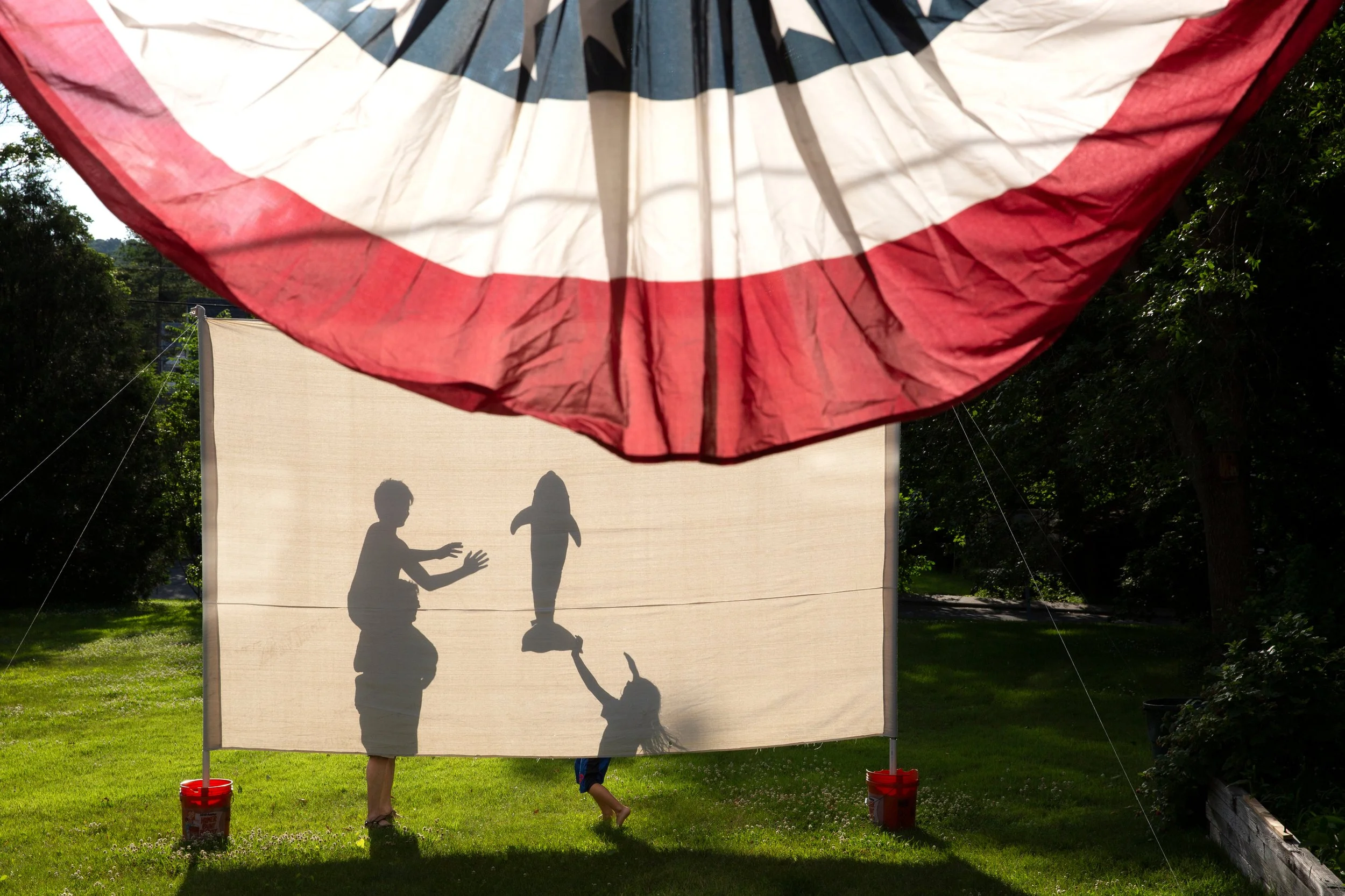
DOLPHIN, from the series, Movie Night. © Shawna Gibbs
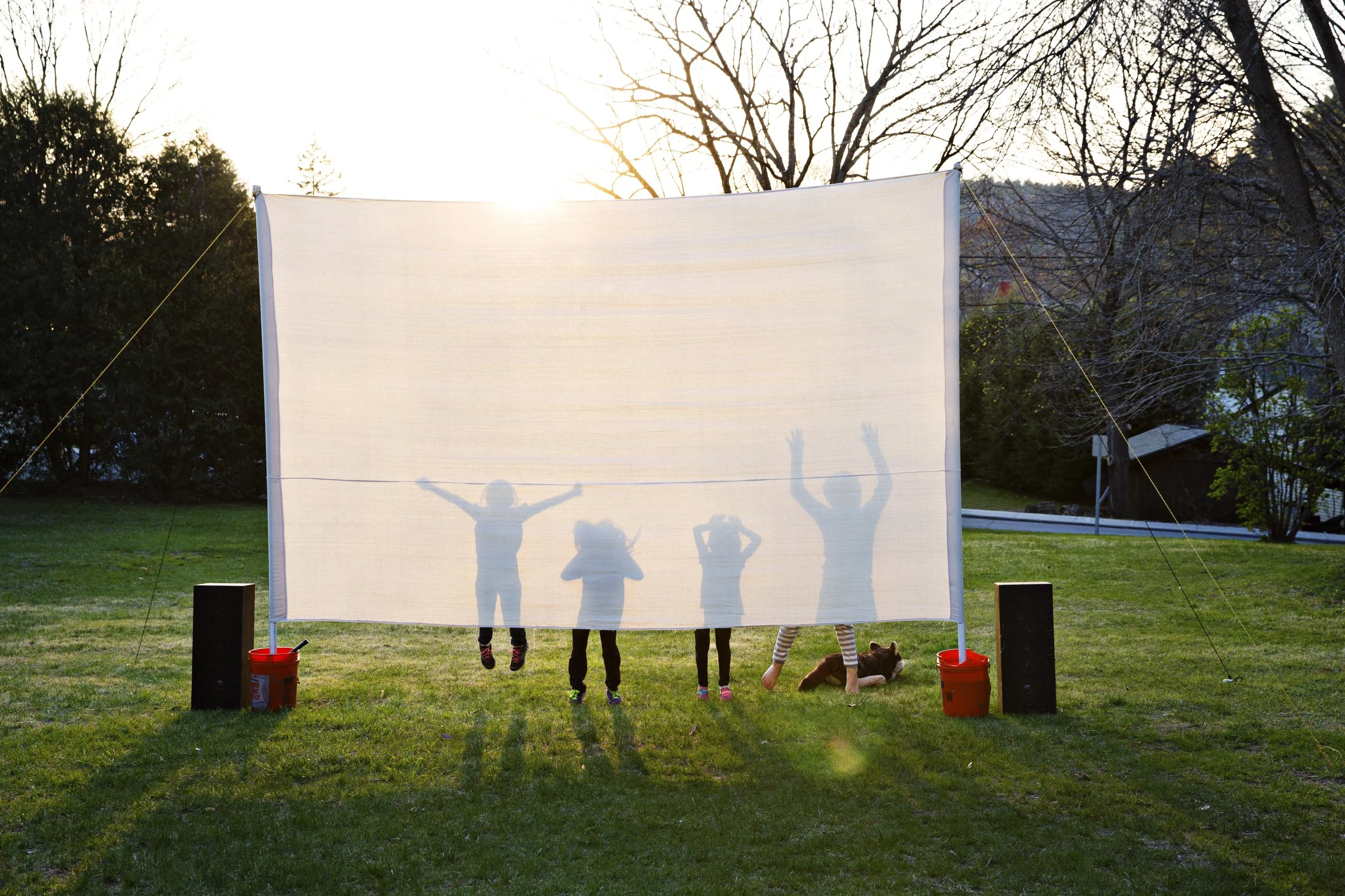
FRIENDS, from the series Movie Night. © Shawna Gibbs

JUMP, from the series Movie Night. © Shawna Gibbs

TREE, from the series Movie Night. © Shawna Gibbs
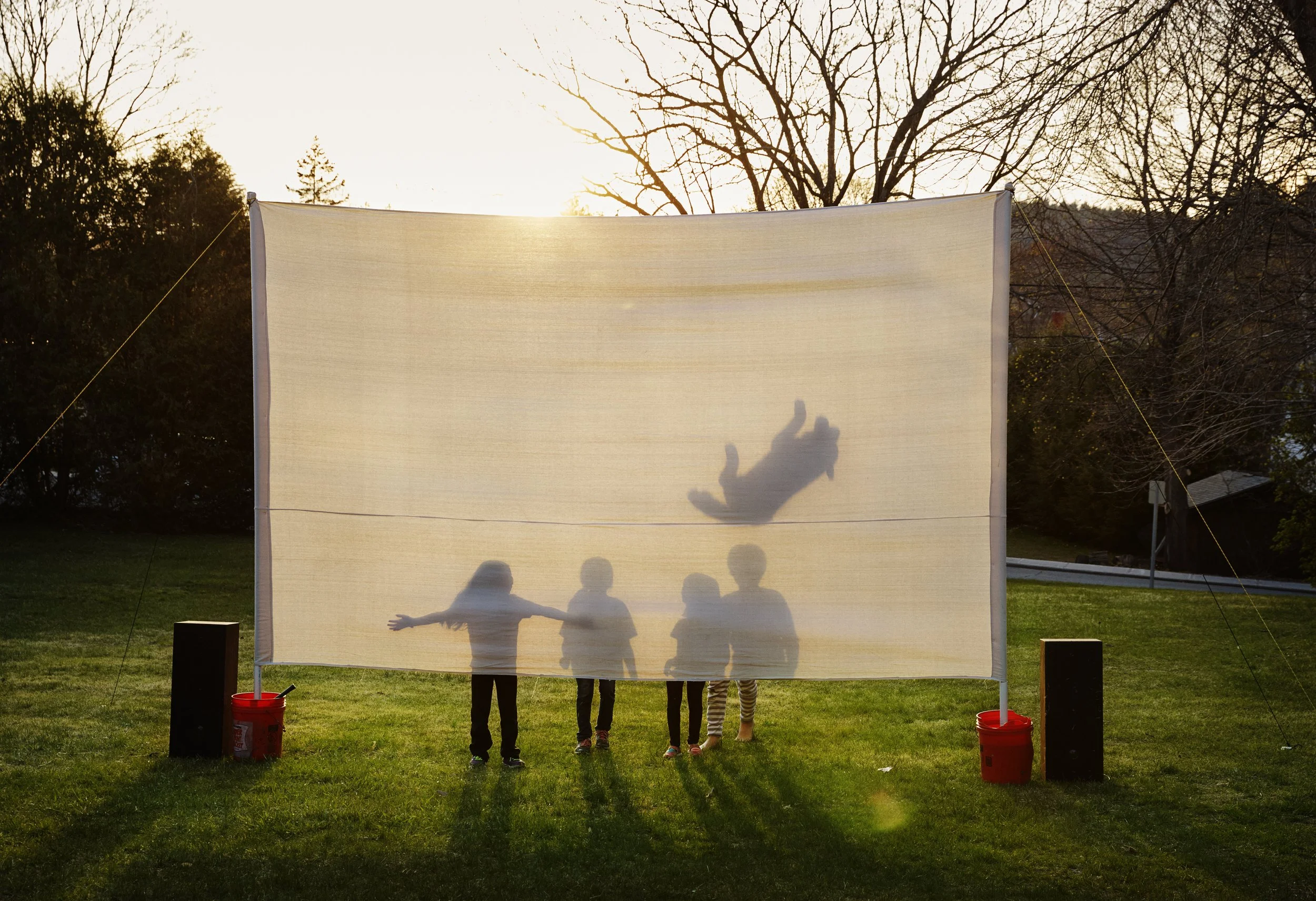
WOLF, from the series Movie Night. © Shawna Gibbs
EQUALITY, from the series My Summer with Optimus Prime. © Shawna Gibbs
Jai Thakur
India
Indian photographer Jai Thakur explores the intersections between personal and collective experience through long-form documentary work. His projects often deal with social and environmental crises, revealing the quiet endurance of individuals within systems of neglect.
Over the years, Thakur has received recognition for his deeply engaged storytelling: he was awarded the “Water Hero” title by the Government of India for his work on river conservation and was a finalist in the POY Asia Awards for his documentation of acid attack survivors. In addition to receiving a Sahapedia grant for a project on Delhi’s potter community, he has also been a member of Diversify Photo since 2022 and completed the Reuters Digital Journalism Foundation Course in 2023.
© Jai Thakur
© Jai Thakur
© Jai Thakur
© Jai Thakur
© Jai Thakur
Thakur’s long-term series Yamuna: Water and Life reflects the duality that runs through much of his practice. Drawn to the river initially by its mythological significance, he was soon confronted by its deteriorated state. “The contrast between its divine status and its deteriorated condition was stark,” he writes. This contradiction became the core of a multi-year engagement—one that is both documentary and introspective in nature.
© Jai Thakur
© Jai Thakur
© Jai Thakur
Through his images, Thakur maps the transformations of the Yamuna River as both a physical and symbolic space. His photographs capture toxic foam from upstream factory runoff, boys diving into polluted waters, and families performing sacred rituals in its murky currents. “Their faith undiminished by the filth around them—an act of worship that is both beautiful and painful to witness.” Migratory birds fly overhead, hinting at a fragile persistence.
© Jai Thakur
As the project developed, the river became more than a subject—it became a metaphor. “The Yamuna became a mirror,” Thakur reflects. “It reflected my own contradictions—my silence in the face of decay, my longing for purity, and my slow, deepening empathy for people’s endurance and faith.” This act of looking—of not turning away—became, for Thakur, a way of reclaiming care and presence in the face of overwhelming decline.
© Jai Thakur
© Jai Thakur
© Jai Thakur
As the project developed, the river became more than a subject—it became a metaphor. “The Yamuna became a mirror,” Thakur reflects. “It reflected my own contradictions—my silence in the face of decay, my longing for purity, and my slow, deepening empathy for people’s endurance and faith.” This act of looking—of not turning away—became, for Thakur, a way of reclaiming care and presence in the face of overwhelming decline.
© Jai Thakur
© Jai Thakur
As the project developed, the river became more than a subject—it became a metaphor. “The Yamuna became a mirror,” Thakur reflects. “It reflected my own contradictions—my silence in the face of decay, my longing for purity, and my slow, deepening empathy for people’s endurance and faith.” This act of looking—of not turning away—became, for Thakur, a way of reclaiming care and presence in the face of overwhelming decline.
© Jai Thakur
Pratibha Reddy
United States
Pratibha Reddy is a travel and nature photographer whose work is rooted in personal transformation, deep reverence for the natural world, and a contemplative visual language. Her images, often serene and meditative, invite viewers to pause and experience the quiet grandeur of remote landscapes and delicate wildlife encounters.
Reddy's journey into photography began with a moment of profound loss. In December 2015, she had planned a trip to Antarctica with one of her sons, but just before departure, he tragically passed away. One year later, in December 2016, she made the journey alone in his memory. That experience not only marked her return to a place of emotional significance but also sparked a lasting commitment to photography. “Photography became both a means to document my travels and a therapeutic outlet during a difficult time,” she recalls.
SMOKE BREAK ©Pratibha Reddy
Since then, Reddy has explored some of the planet’s most untouched environments—Antarctica, Madagascar, Tanzania, and the United States—drawing inspiration from their raw beauty and emotional resonance. Her ongoing project Yugen, developed during a second voyage to Antarctica, reflects a mature and confident artistic voice. The series captures the fleeting grandeur of the polar landscape in black and white, emphasising scale, light, and stillness. “The sheer scale and untouched beauty of Antarctica serve as a humbling reminder of our smallness in the face of nature’s vastness,” Reddy writes.
A MOMENT OF FLIGHT © Pratibha Reddy
HARMONY © Pratibha Reddy
Whether documenting endangered wildlife in Madagascar or solitary figures traversing the dunes of White Sands, her work is characterised by an intimate yet expansive vision. One such image, Infinite Dreams, is part of her Desert Hues series and holds personal significance. Captured at sunrise in White Sands National Park, the photograph features a lone figure dwarfed by vast dunes. “It speaks to the beauty of solitude, the allure of exploration, and the peaceful connection one feels when immersed in such an untouched landscape.”
TUFA TOWERS © Pratibha Reddy
GARDEN OF BLISS © Pratibha Reddy
Reddy’s process is patient and immersive. Before releasing the shutter, she takes time to observe and connect with her surroundings—what she describes as “mental sketching.” In the field, she often waits for the right light or gesture, embracing the slow rhythm of nature photography. “Whether it’s waiting patiently for wildlife to reveal itself or observing the way light dances on a flower, I embrace the slow and contemplative nature of photography.”
Her technical approach is equally deliberate. Shooting in RAW format, she uses Adobe Lightroom and Photoshop to fine-tune each image, applying only subtle adjustments to emphasise mood, tone, and composition. “My goal is not to alter reality but to enhance the mood and emotion that I felt during the capture.”
From left
LIGHT CATCHER © Pratibha Reddy
GOLDEN RAYS © Pratibha Reddy
Reddy has refined her practice through ongoing education and mentorship. She credits photographers like Rick Sammon, Danielle Austen, Nicole and Steve Gettle, and Blake Rudis for shaping her vision and technique. Their influence can be seen in her use of soft-focus backgrounds in floral imagery, low-angle perspectives in wildlife photography, and a minimalistic approach in her landscapes.
From left
LACE WORK © Pratibha Reddy
TRANSLUCENT GRACE © Pratibha Reddy
Above all, her work reflects a mindful engagement with the natural world. “Nature, in all its forms, captivates me—from the delicate curve of a petal to the quiet majesty of a distant mountain,” she says. Each photograph is both a document of place and an expression of internal experience—a bridge between outer landscape and inner reflection.
“This collection represents the culmination of years of growth, exploration, and personal reflection,” she shares. “Each image serves as a milestone, marking moments of transformation, healing, and awe.”
From left
WHISPERS OF SPRING © Pratibha Reddy
INFINITE DREAMS © Pratibha Reddy
“Each image is an invitation to pause, reflect, and appreciate the intricate details that make every subject unique.”
DELICATE BALANCE © Pratibha Reddy

SOLO TRAVELLER © Pratibha Reddy

IVORY DUSK © Pratibha Reddy
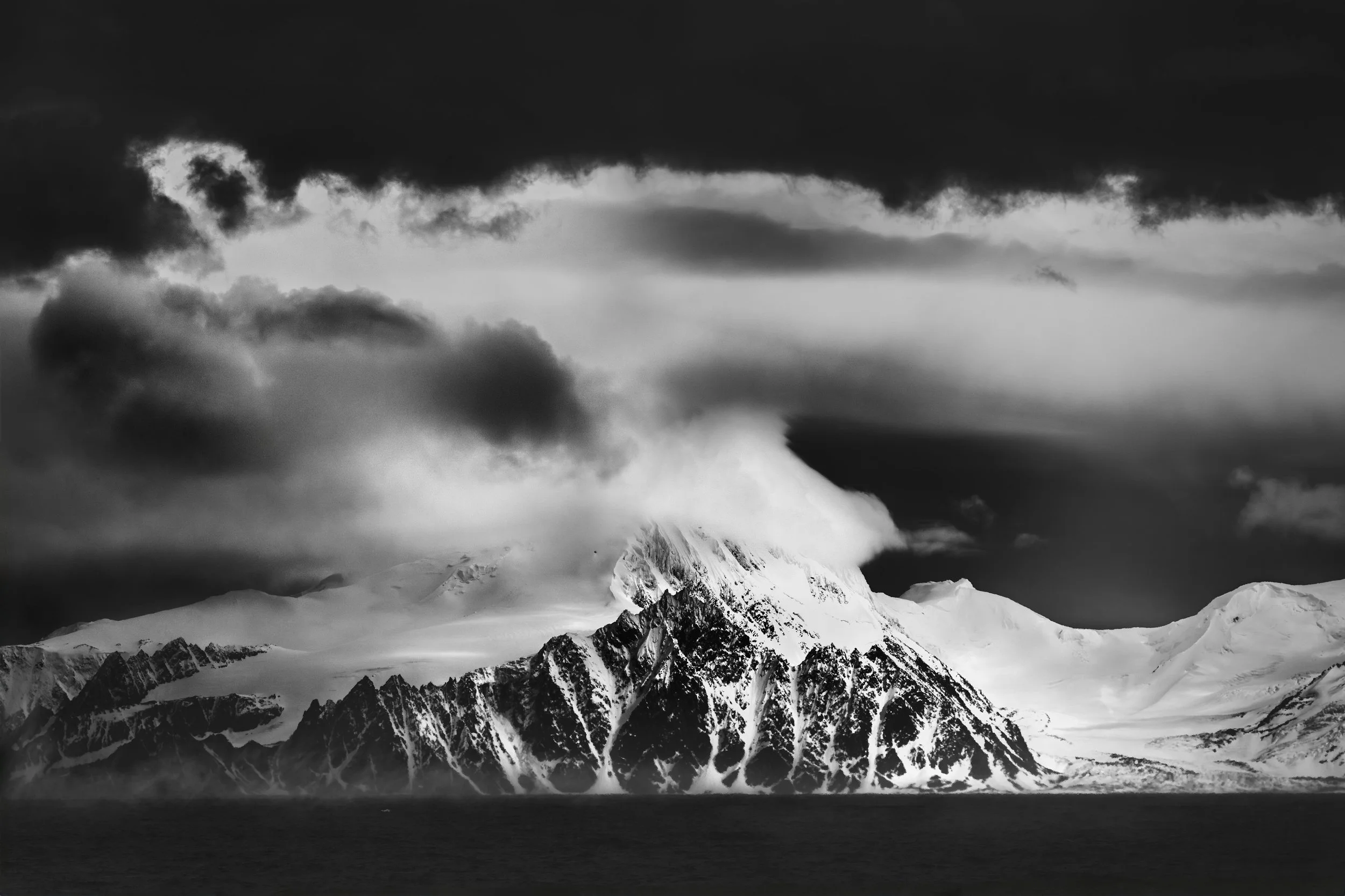
SILENT GUARDIAN © Pratibha Reddy

WINTER MOONLITH © Pratibha Reddy
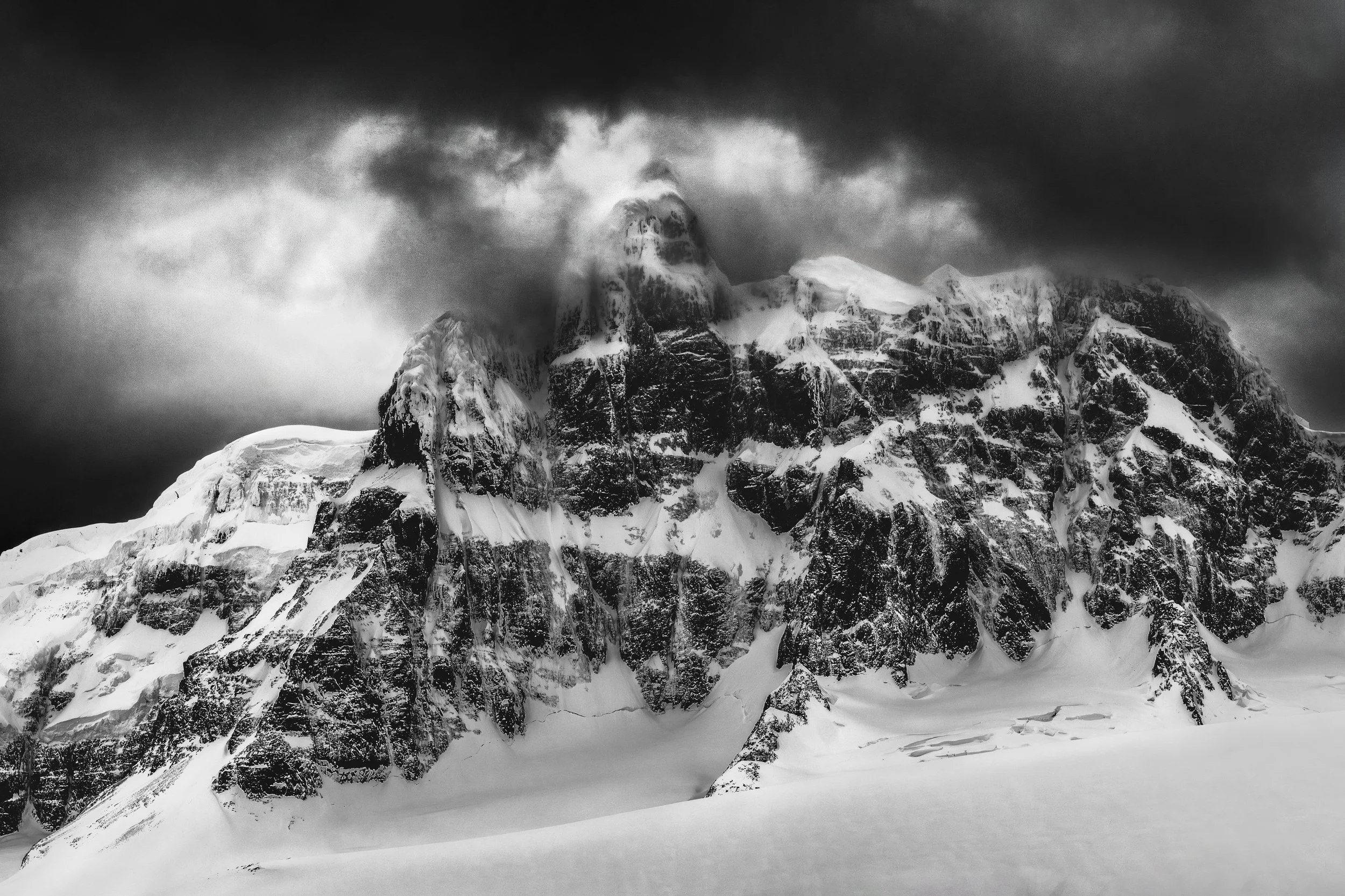
SHROUDED MAJESTY © Pratibha Reddy
Madhur Dhingra
Canada | India
Based between Toronto and New Delhi, Madhur Dhingra is a self-described minimalist, surrealist, and fine art photographer whose work resonates with an emotional rawness rooted in personal history and spiritual inquiry. His photographic journey began in the mid-1990s as a hobby, later evolving into a deep passion and profession after studying at the renowned Triveni Kala Sangam in New Delhi.
1-3711, from the series Shunyata - शून्यता - The Ultimate Void, 2020 © Madhur Dhingra
Born in Delhi into a family displaced by the India–Pakistan Partition, Dhingra carries a legacy of inherited trauma and a persistent sense of restlessness that has shaped both his worldview and his work. “Photography came to me as a fulfilment of the void that has plagued me since childhood,” he reflects. This emotional undercurrent permeates his images, which are known for their painterly textures, blurred forms, and evocative moods.
10-7848, from the series Shambala-བདེ་འབྱུང- A Paradise On Earth, 2022 © Madhur Dhingra
Dhingra’s style has undergone a significant evolution—from stark street realism to a more abstract, surreal, and impressionistic language. Rather than chasing decisive moments, he now embraces spontaneity, movement, and emotional depth. “I love spontaneously created moments and real emotions,” he says. “Those strange and unknown faces with their uncharted expressions enthral me to my very core.” His post-processing is as intuitive as it is deliberate, often involving digital brushwork, smudging, and painterly effects to achieve a specific mood.
2-5393, from the series Anant -अनंत - In Search Of The Absolute, 2021 © Madhur Dhingra
From left to right:
15-6500, from the series Mahashamshan- महाश्मशान-The Dance Of Death, 2021 © Madhur Dhingra
12-122_S, from the series Anant -अनंत - In Search Of The Absolute, 2021 © Madhur Dhingra
14-9266, from the series Gahan- गहन-I Am Light, 2021 © Madhur Dhingra
One of Dhingra’s most compelling threads is his use of photography as a medium for philosophical and spiritual exploration. His travels have taken him across remote regions of India and the Himalayas—including Nepal, Bhutan, Ladakh, and Zanskar—where he engages in dialogue with Buddhist monks, Vedantic yogis, agnostics, scientists, and spiritual seekers. Many of his images originate in 1,500-year-old monasteries and sacred landscapes, lending his work a timeless quality. Through this journey, he has come to reject the conventional idea of a Creator God in favour of a more nuanced, non-dual vision of the universe: “The Universal Mind does not exist separately along the universe but in it and as it.”
3-005_S, from the series Shunyata - शून्यता - The Ultimate Void, 2020 © Madhur Dhingra
7-456_S, from the series Shunyata - शून्यता - The Ultimate Void, 2020 © Madhur Dhingra
13-9086, from the series Gahan- गहन-I Am Light, 2021 © Madhur Dhingra.
This philosophical foundation gives Dhingra’s photography its distinctive emotional and metaphysical tone. He is driven by a deep-seated need to understand the nature of existence itself. “My images are a part of a personal journey where I search for answers to some fundamental questions about life, its meaning and purpose, and the ultimate nature of Reality,” he explains. The result is work that feels both intimate and expansive, grounded in the physical world but reaching toward something beyond it.
11-964_S, from the series Akaal - अकाल -Being Timeless, 2021 © Madhur Dhingra
While his photographs have been widely exhibited and published across India, Europe, North America, and beyond, Dhingra remains committed to developing his unique artistic voice. “When you try to imitate other people's work, you never rise above the ordinary,” he says. “But the day you carve out your own style and path, you definitely make yourself heard—sooner or later.”
9-2822, from the series Shunyata - शून्यता - The Ultimate Void, 2020 © Madhur Dhingra
8-1577, from the series Shunyata - शून्यता - The Ultimate Void, 2020 © Madhur Dhingra
4-0692, from the series Shunyata - शून्यता - The Ultimate Void, 2020 © Madhur Dhingra
Giuseppe Satriani
Spain
IG: @giusatriani
Giuseppe Satriani, born in southern Italy and now based in Bilbao, approaches photography as both a disciplined craft and an experimental field. His work unfolds along two parallel paths: one rooted in traditional photographic practice, the other in digital creation enhanced by artificial intelligence. While these paths differ in process, they share a common foundation—an attempt to transform personal memories, emotional states, and inner visions into visual form.
Satriani’s initial desire to paint as a child shifted into photography, which he discovered as a way to channel his creative energy without the limits of his drawing skills. Over the years, he refined his practice, inspired by figures such as Franco Fontana, Larry Fink, Joan Fontcuberta, Pilar Pequeño, and Juan Pablo Demiguel. In 2023, he began to integrate AI into his work. For him, AI is not a substitute for photography but an extension of it—a tool that “expanded [his] ability to materialise mental visions in images” that had long existed but could not be realised through the camera alone.
For this issue, we present two of Satriani’s recent projects, each illustrating one of these “dimensions.”
CANTO V - LUSSURIOSI, from the series Divina, 2024. © Giuseppe Satriani
Divina, the featured series, is an AI-based body of work inspired by Dante Alighieri’s Inferno. Drawing on three sources—the original verses, Gustave Doré’s 19th-century engravings, and Roberto Benigni’s vivid public readings—Satriani constructed visual interpretations of specific “Canti.” Each image emerged from an iterative process: prompts were adjusted, compositions refined, and elements manually blended until they matched the emotions and atmospheres Dante’s poetry had long evoked in him. “Since school, I have had the desire to represent what Inferno evoked in me,” Satriani recalls. “Only now, with the help of AI, I have been able to realise what my mind imagined.”
CANTO III-IGNAVI, from the series Divina, 2025. © Giuseppe Satriani
CANTO VI GOLOSI, from the series Divina, 2024. © Giuseppe Satriani
CANTO III-PORTA INFERNO, from the series Divina, 2024. © Giuseppe Satriani
CANTO XIII SUICIDI, from the series Divina, 2025. © Giuseppe Satriani
COVER, from the series Divina, 2025. © Giuseppe Satriani
CANTO XV SODOMITI, from the series Divina, 2025. © Giuseppe Satriani
The series is rich in symbolic scenes, each representing a moral and psychological state. In Canto III – Porta Inferno, Dante and Virgil stand before the ominous gates of Hell, where a warning declares that those who enter abandon all hope. Satriani’s version amplifies that tension, casting the figures against a monumental, almost sculptural architecture of shadow and stone. Another striking piece, Canto V – Lussuriosi, shows the damned souls of the lustful, condemned to be forever tossed by violent winds. Among them appear Paolo and Francesca, whose tragic love story Dante immortalised. “Dante notices two souls flying together; he calls them; they are Paolo and Francesca, who in life were killed by Paolo’s brother when he discovered his wife’s infidelity,” Satriani explains.
CANTO III-CARONTE, from the series Divina, 2024. © Giuseppe Satriani
CANTO XXI LADRI, from the series Divina, 2025. © Giuseppe Satriani
SOPELANA, from the series Euskadi, 2024. © Giuseppe Satriani
Each visual choice reflects careful research and compositional construction. The artist generated multiple versions for each canto, extracted fragments, corrected anatomical distortions, and assembled them in Photoshop. “I never got everything I wanted in a single generation,” he says. “I took pieces from different versions to make the final composite, using brushes and layers. To correct errors in human body parts, I even applied inpainting techniques.”
In contrast, Euskadi Abestia—a series born from Satriani’s decades-long relationship with the Basque Country—shows his traditional photographic side. These images capture coastal landscapes shaped by tides, geological formations, and changing weather. For Satriani, they are not just studies of nature but expressions of a deeper resonance: “The hinterland seems to entrust its inner beauty to the ocean, to receive it back, amplified by an imagined world that had always the flavour of exploration and challenge.”
CANTO XXXIII TRADITORI, from the series Divina, 2025. © Giuseppe Satriani
This dual practice—working with both camera and algorithm—may seem contradictory, yet Satriani approaches each with the same artistic rigour. “My visual proposals are the emotional cartography of my experience and living,” he explains. “Whether I’m photographing a seascape at dawn or refining an AI prompt for hours, I am trying to align my intentions with the result.”
SAN JUAN, from the series Euskadi, 2022. © Giuseppe Satriani
DONIBANE, from the series Euskadi, 2024. © Giuseppe Satriani
SANT ELMO, from the series Euskadi, 2025. © Giuseppe Satriani
In both projects, technique is only a means to serve meaning. For Satriani, the question is not whether an image is “photography” or “AI,” but whether it conveys intention, emotion, and depth: “It is the intention, the concept, the inspiration, but also the way in which I manage the creative process—mixing photography, generative AI, Photoshop, and manual skills—that makes the difference.”
ZUMAIA FLISH, from the series Euskadi, 2025. © Giuseppe Satriani
Karolina Skorek
United Kingdom
Karolina Skorek is a Polish-born visual artist whose practice bridges centuries of artistic tradition with the imaginative power of digital tools. Drawing on the emotional gravity of the Baroque and the symbolism of Polish romanticism and surrealism, her works unfold as layered visual narratives—rich in theatricality, mythological archetypes, and dreamlike tension.
Currently based in Wales, Skorek’s creative world is shaped by her Central European roots and her fascination with identity, duality, and the subconscious. Her background includes master’s degrees in illustration, game design, and educational psychology, and her practice spans photography, etching, and graphic design. She is also a committed educator, teaching originality in design and encouraging emerging artists to explore narrative and emotional depth in their work.
MEMORIES © Karolina Skorek
A hallmark of Skorek’s process is the seamless fusion of traditional and modern media. Each piece typically begins as a drawing or etching before evolving into complex photographic compositions. Working primarily in her studio, she meticulously constructs scenes—including costumes, props, and set design—before photographing and then refining them in post-production. She relies heavily on Adobe Photoshop and Procreate, using these tools not just for editing but as extensions of her visual storytelling. “Post-production allows me to refine the interplay of light and shadow, enhance textures, and incorporate the symbolic and surreal elements that are essential to my work,” she says.
SILENT WONDER © Karolina Skorek
CASSANDRAS DREAM © Karolina Skorek
OPUIS SAUDADE © Karolina Skorek
Her visual language is profoundly inspired by artists such as Rembrandt and Caravaggio, particularly their command of chiaroscuro, and by Polish visionaries like Beksiński, Witkacy, Malczewski, and Matejko. These influences infuse her work with a deep emotional current and a love of layered symbolism. “Their mastery of storytelling, symbolism, and the human condition provides a timeless foundation, while I reinterpret these elements through my contemporary lens.”
CRIMSON RELIC © Karolina Skorek
At the heart of Skorek’s imagery is a commitment to emotional resonance and archetypal storytelling. Her compositions often include symbolic elements—keys, birds, circles, and the moon—alongside visual references to tarot and mythology. These recurring motifs form a bridge between personal introspection and universal experience, reinforcing the themes of transformation, mortality, and rebirth.
The image Reborn: Flora Occulta stands as a powerful example. In it, human and botanical elements merge into a surreal yet intimate portrayal of regeneration. “It represents transformation, rebirth, and the intertwining of humanity with nature,” she explains. “The muted yet rich tones echo the Baroque inspiration found throughout my work, while the circle in the background symbolizes wholeness, eternity, and the cyclical nature of life and death.”
LUX MUNDI © Karolina Skorek
EMERALD REVERIE © Karolina Skorek
Working with models, for Skorek, is a form of collaboration and storytelling. She describes them not as subjects but as actors within a constructed scene—individuals who bring their own interpretations to the layered narratives. “Their individuality and expressions are essential, as they infuse the work with a sense of realism and connection.”
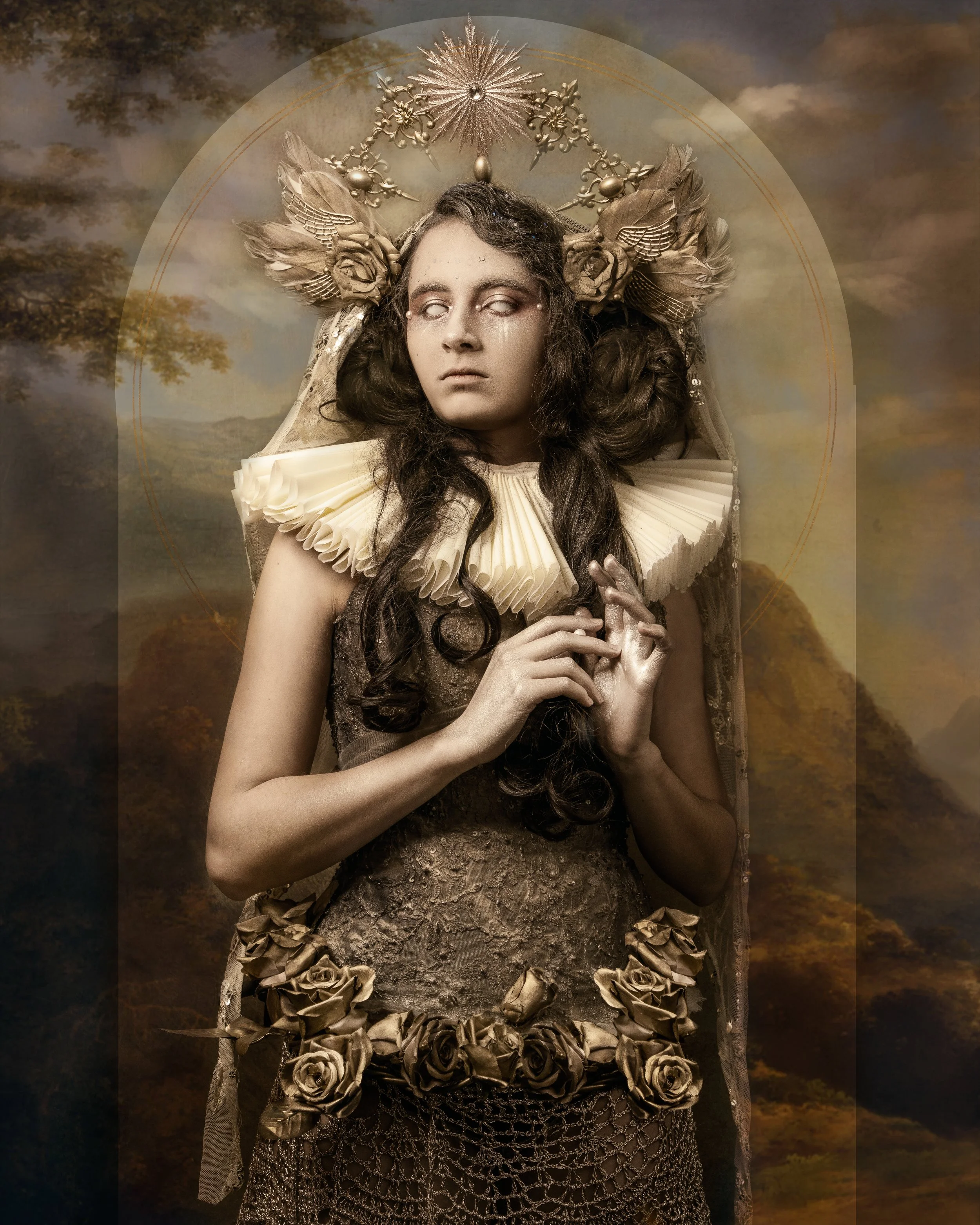
SANCTUM AUREUM © Karolina Skorek
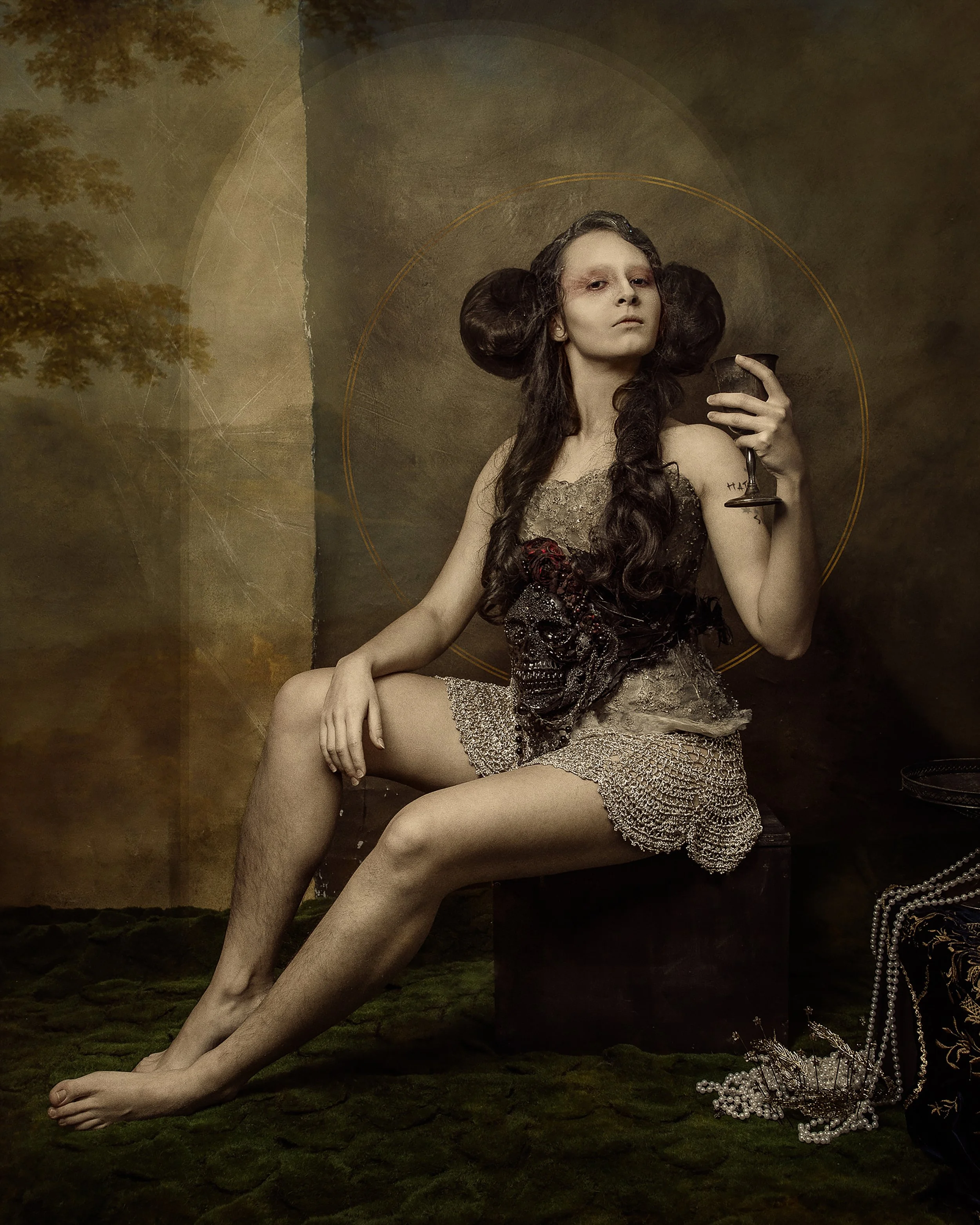
THE POPE © Karolina Skorek
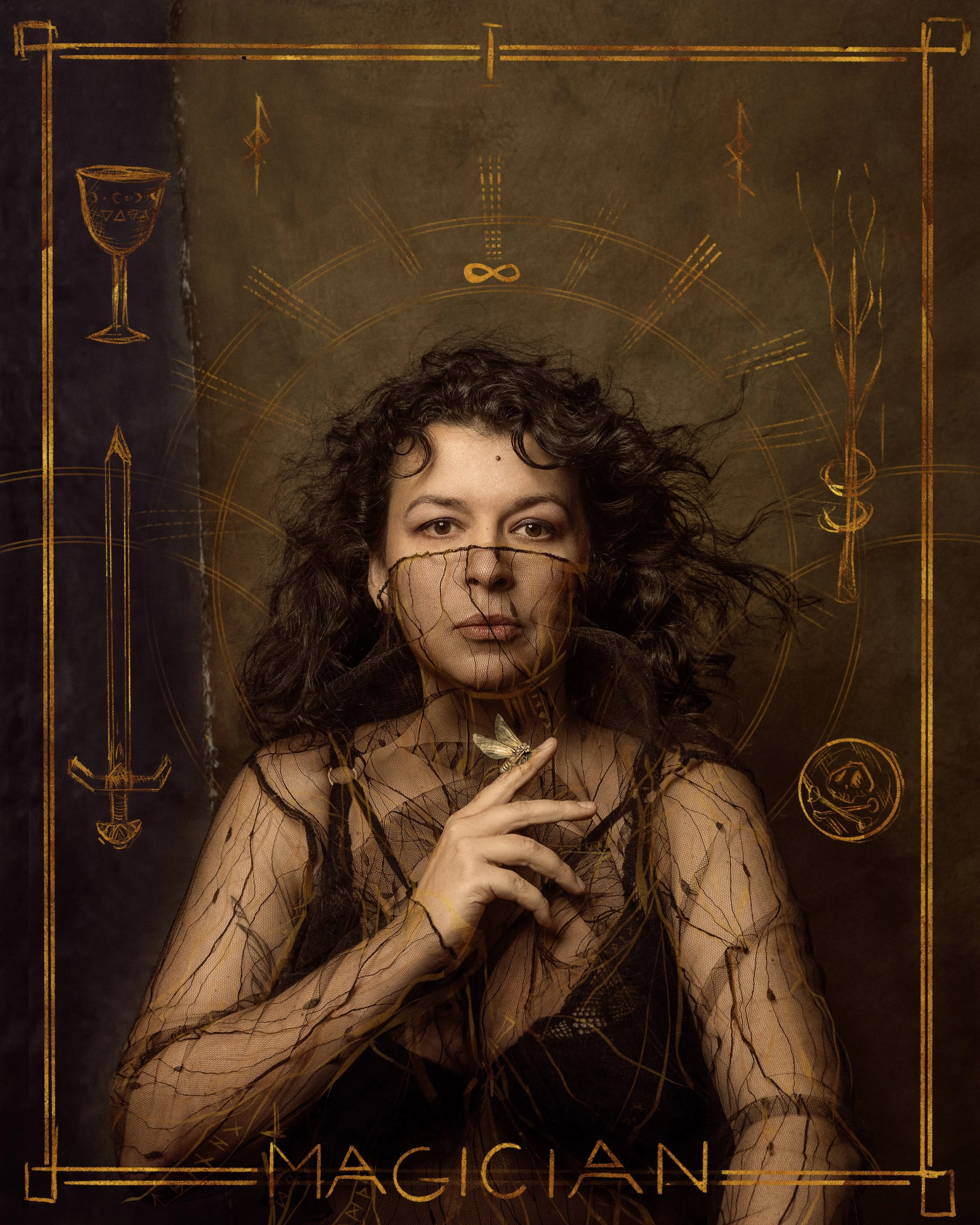
THE MAGICIAN © Karolina Skorek

SOMNIUM SILVANUM © Karolina Skorek

SOUL COMPASS © Karolina Skorek
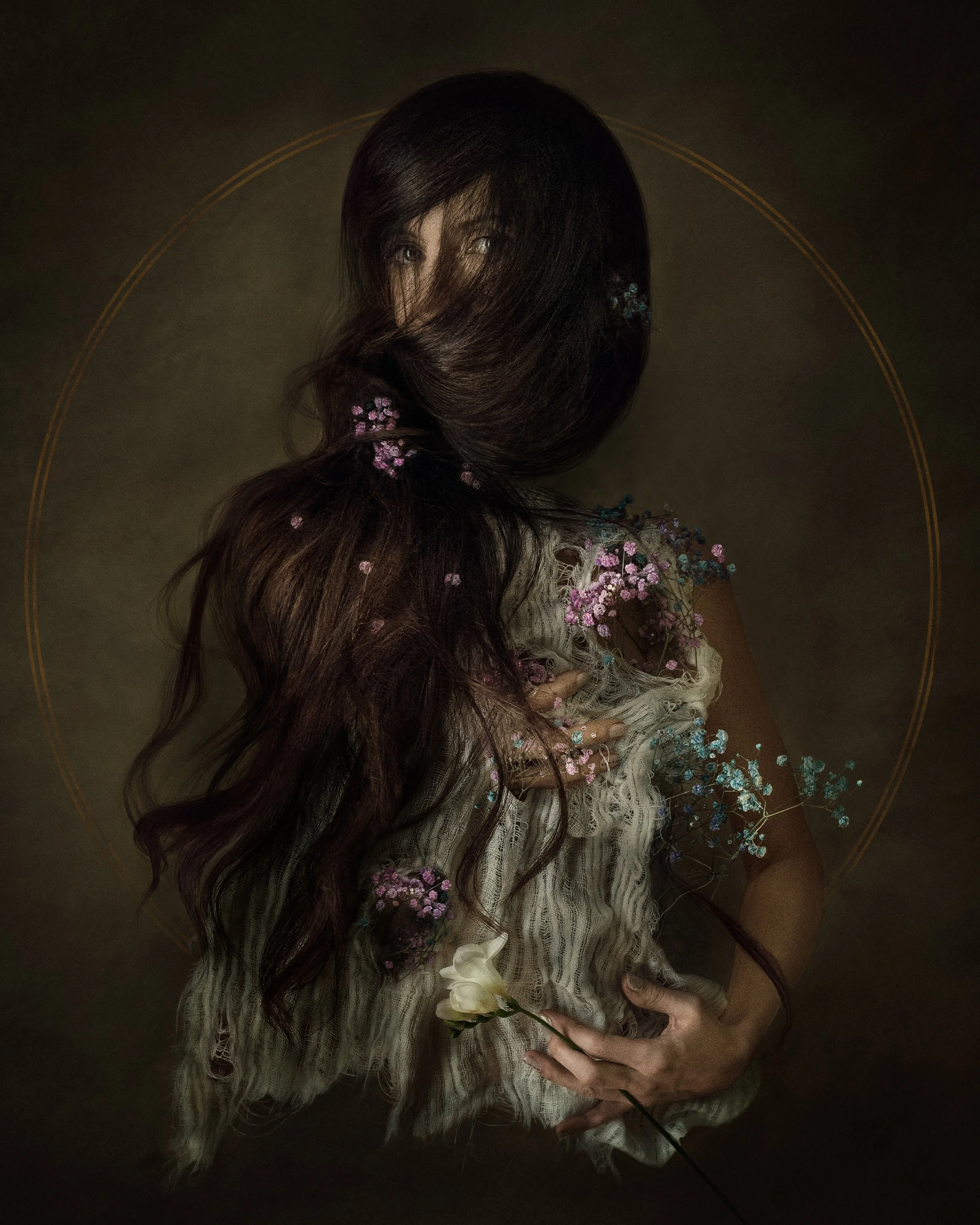
FLORA OCCULTA © Karolina Skorek
Though steeped in the fantastical, her work is rooted in precise intention. Each series is preceded by in-depth research—into archetypes, Jungian psychology, folklore, and personal memory. Once the vision is clear, she sketches, constructs, photographs, and finally transforms the captured image into a rich, multi-dimensional final work. This slow, immersive process is central to the emotional depth her images convey.
EPHEMERAL ESCAPE © Karolina Skorek
PATIENCE © Karolina Skorek
Throughout her evolving body of work, Skorek remains committed to the themes that first drew her to art: identity, duality, femininity, the interplay of light and shadow, and the enduring power of myth. Her surrealist compositions offer a space for introspection—inviting viewers to engage with their own subconscious as much as with the visual form itself.
THE IMPOSSIBLE STILL LIFE © Karolina Skorek
TEA TIME © Karolina Skorek
PUBLISHED PHOTOGRAPHERS
Giuseppe Satriani
Jai Thakur
Karolina Skorek
Madhur Dhingra
Pratibha Reddy
Shawna Gibbs
Issue #45 - July 31, 2025
Publisher Julio Hirsch-Hardy
Editor-at-large Analy Werbin
Coordinator Leonor Fernandes
Art Director Michal Meliško
Graphic Designer Maria Krawczyk
Cover © Shawna Gibbs















































































